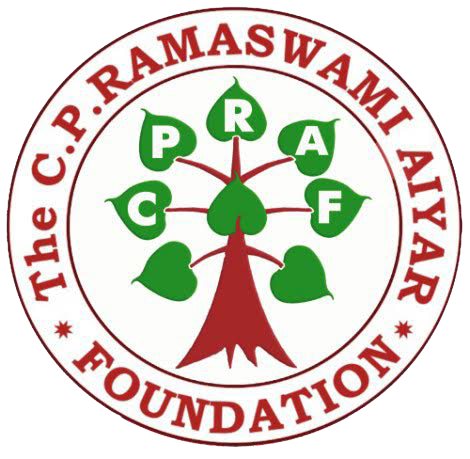


SHAKUNTHALA JAGANNATHAN MUSEUM OF KANCHI
KANCHIPURAM
“Culture involves a vivid awareness of the meaning of life, a conspectus of the world's problems in the proper order and relative importance and the deliberate choice of things that are really worthwhile." - Sir C.P. Ramaswami Aiyar
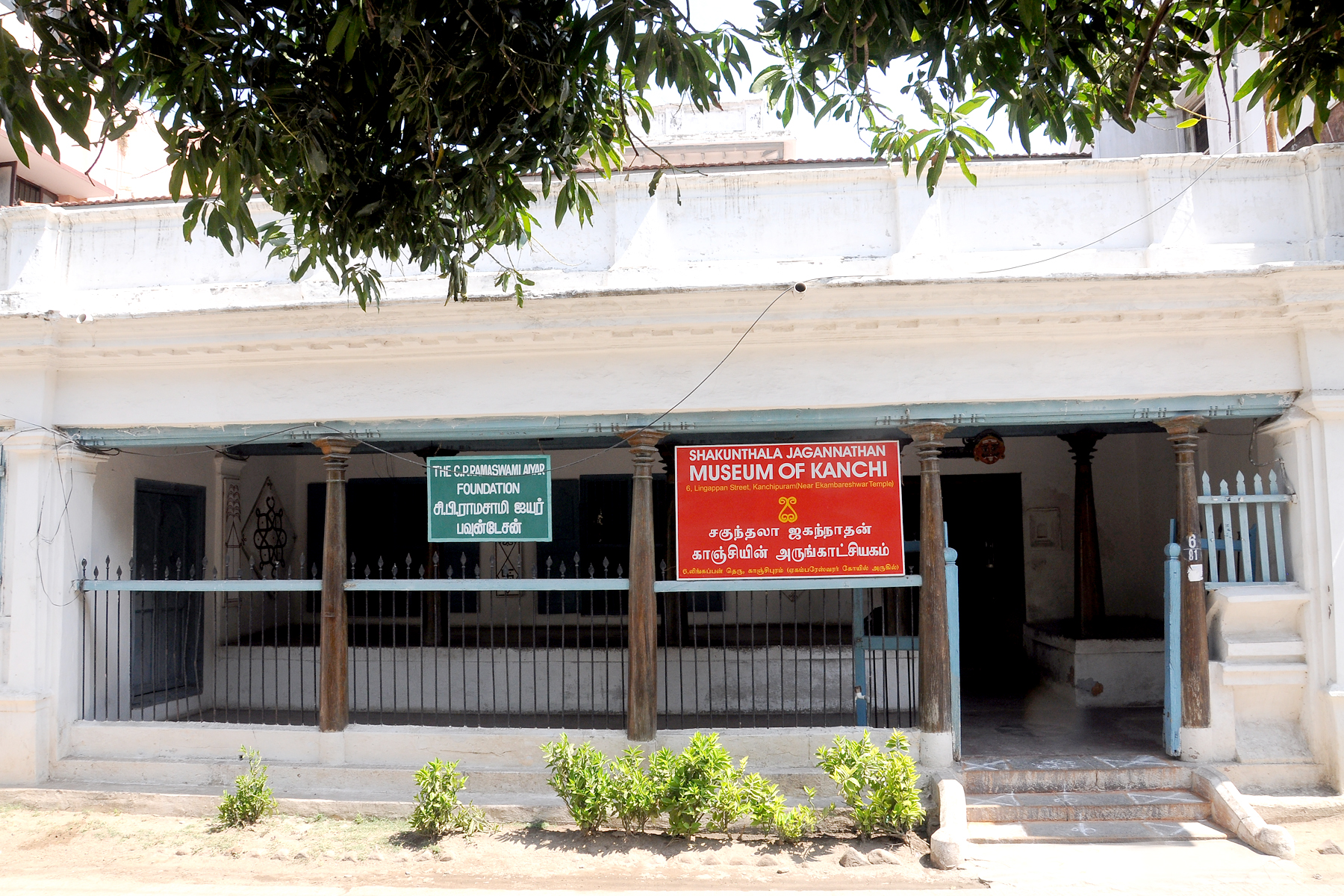
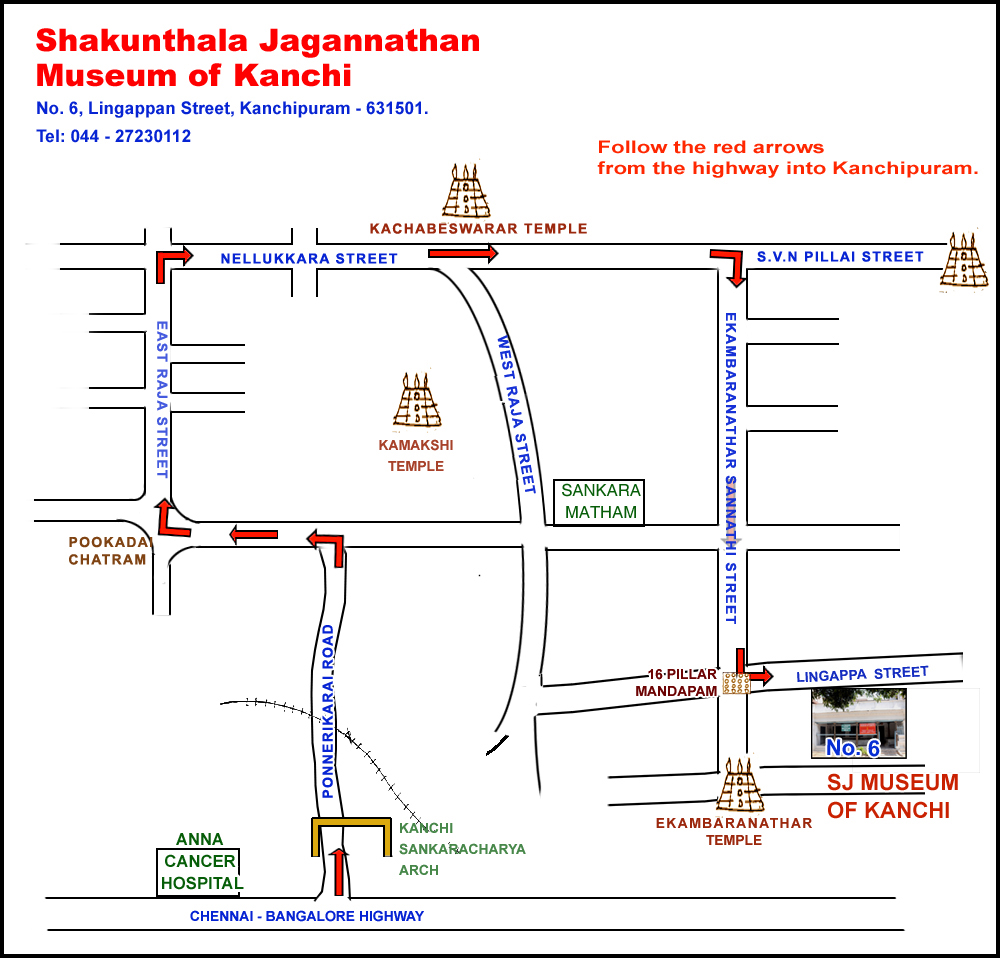
The Shakunthala Jagannathan Museum of Kanchi is unique, in that it has a collection of everyday items that belong exclusively to Kanchipuram, reflecting its ancient and exclusive culture. There are few, if any, museums in India that showcase local culture and artifacts. The Shakunthala Jagannathan Museum of Kanchi is one-of-a-kind, established in 2001.
The Museum was the brainchild of the late Mrs. Shakunthala Jagannathan, former Regional Director and Deputy Director General of Tourism, Government of India, Bombay (Mumbai). Brahma Mandiram, where the Museum is situated, was her ancestral home, which was gifted by her father C.R. Pattabhi Raman to the C.P. Ramaswami Aiyar Foundation. The house itself belongs to the Vijayanagara period, the 15th-16th centuries, about 500 years old, and has been preserved to showcase a lifestyle of an age gone by, an age of spiritualism and sages, where simplicity and beauty were the hallmark of existence. The house, with its wall paintings and beautiful pillars, belonged to a family of land owners of Damal village, maternal ancestors of C.P. Ramaswami Aiyar. C.P.’s grandfather did something revolutionary in the 19th century: he gave the house and his other properties to his only child, a daughter, in an age when girls did not inherit property, an age when they sat behind the purdah, in zenanas, which can be seen in this building. The daughter, Rangammal, became a powerful matriarch, and has been immortalized in Rangammal Vidyalaya, the primary school established by the C.P. Ramaswami Aiyar Foundation in the adjoining part of the house. On Raja Veedhi Street, another of her homes now houses the SSKV Girls’ school.
Shakunthala Jagannathan gifted her beautiful collection of antique paintings, brass utensils and lamps, musical instruments, textiles and dolls for the Museum, whose collections are based on her personal collections. Some she inherited. Some were acquired. They are a living testimony to Kanchi and its rich heritage.
The basic architecture of the house has been retained, although the rooms have been modified to display the collections. The visitor enters past the tinnai, through the first kattu and into the kalyāna koodam, where the display begins.
Many of the collections belong to modern Andhra Pradesh, which was once a part of Madras Presidency, and the region was known as Chitoor – North Arcot district.
Kalyana koodam
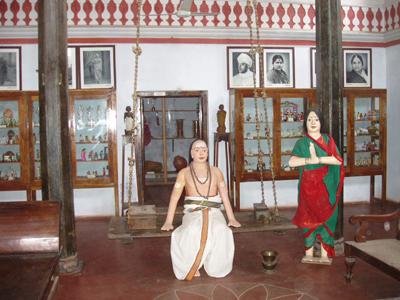
The Kalyāna Koodam or marriage hall was so called because weddings took place here. In the South Indian Brahmin tradition, a bridegroom would come to the bride’s home, marry her according to Vedic rituals, and take her back to his home. Thus the Kalyāna Koodam was the venue of the wedding of the daughter of the family. At other times it functioned as a living room, where men would meet and transact business, especially the buying and selling of land and agricultural produce.
Turning left in the Kalyāna Koodam brings you to a collection of old CHERIYAL paintings. The scroll painting tradition of Cheriyal was, in the past, a form of audio-visual communication, till it was replaced by the television. The members of the Nakashi caste of Warrangal, Telengana, would travel through the villages of Telengana and Andhra Pradesh, singing and narrating stories in the Telugu language, and using the vividly painted scroll as a visual aid. The scroll would contain 40 or 50 panels, each depicting a part of the story, which would be displayed as the story unfolded. These scrolls, in a stylized mode, made for a unique presentation of the epic stories of the Ramayana and Mahabharata, as well as tales of ordinary village life. As Kanchipuram is just south of the Andhra Pradesh border, it was once part of the composite Tamil-Telugu culture.
On the far wall is a cupboard containing KOLU dolls, a part of the Navaratri tradition, when dolls are displayed on specially made steps. There are deities, as well as scenes of daily life. Some of the dolls are locally-made out of clay, others are carved out of wood and painted in bright colours from Kondapalli, a village in Andhra Pradesh. The gilt-covered dolls are made of clay and were once fashioned in villages near Pondicherry. This art has now disappeared.
On the third wall is a collection of carved VĀHANAS, animal vehicles of the Gods, on which are placed figures of the appropriate deity. Murugan rides the Peacock, Shiva the Bull, Ganesha the Mouse, Saraswathi the Swan and Durga the lion.
In the centre of the Kalyāna Koodam are the inevitable of a South Indian home: the oonjal or swing, the “desk” where the family clerk would work, the comfortable lounge furniture and the palanquin, used to carry women of the house, the way Rangammal once travelled before the advent of the car.
On the fourth wall, to the right of the entrance doorway, there are paintings of the history of Kanchi. These alcoves were always beautifully painted as a backdrop for the musicians who sat in the central alcove and entertained the family.
Vadyashala- Musical Instruments
The musical instruments on display were used in both folk and classical music. Each has a social or religious role, but some are no longer in use.
Pooja - Prayer Room
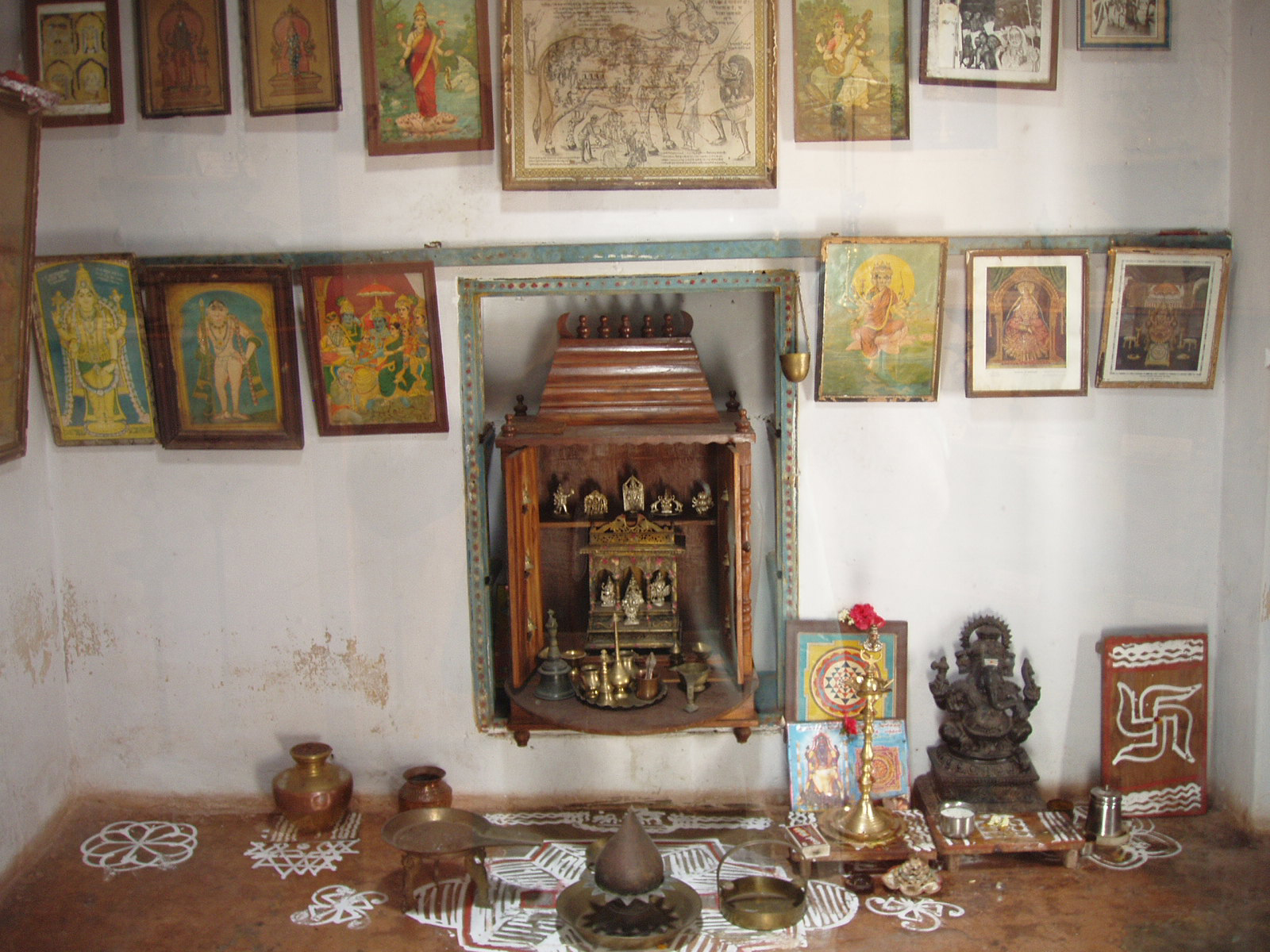
The prayer room of the house, it contains the domestic temple and ritual metal items, used daily.
Deepam - Lamps

A variety of lamps once used to light up the house, before the advent of electricity.
Nadumitham - Central Courtyard
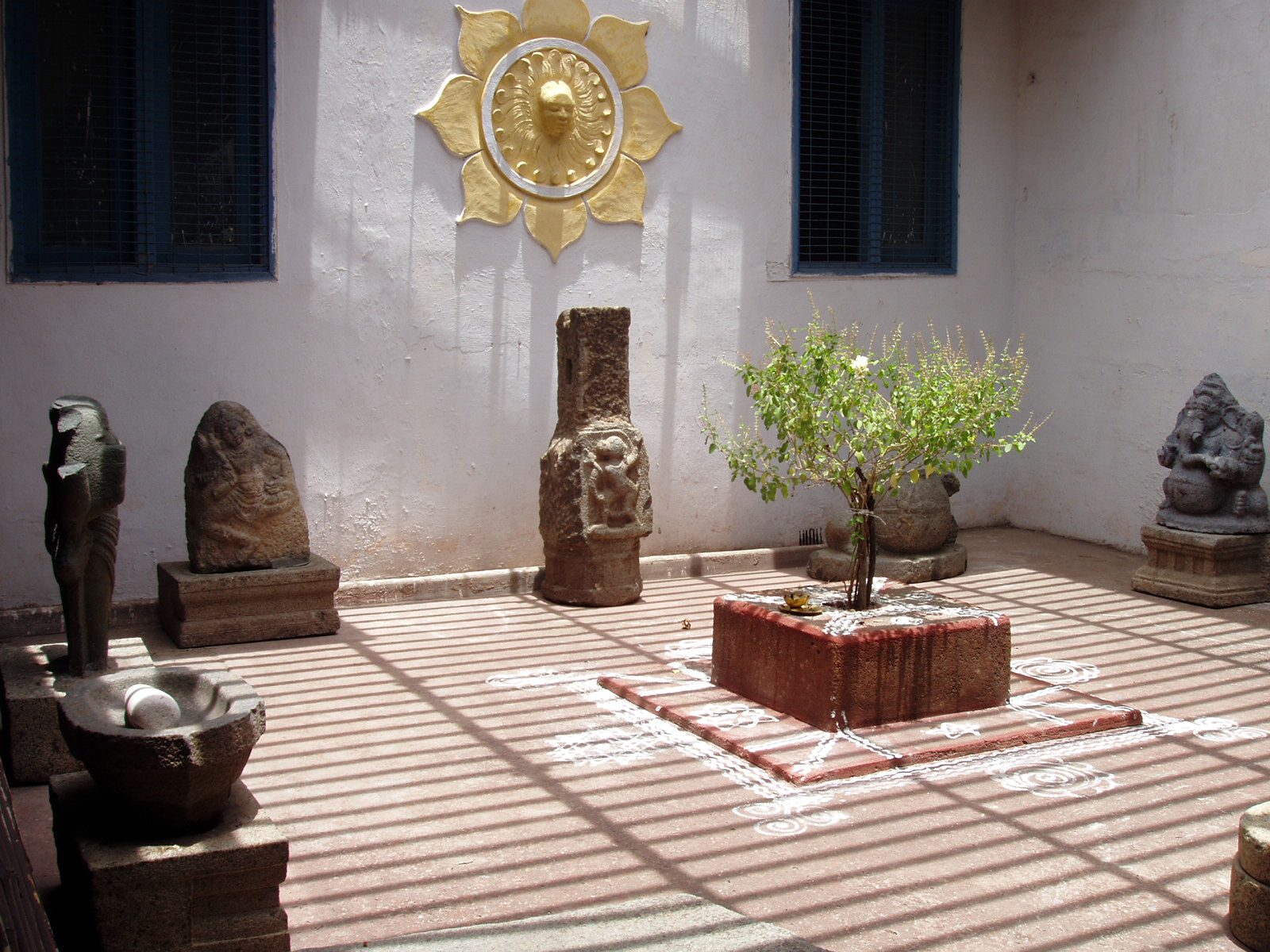
The open courtyard, an essential part of a typical South Indian house, provides ventilation and light for the whole house. Stone grinders and mills used to pound flour, grind rice, lentils, herbs and spice paste and an old chekku (oil mill) are stored here. The tulsi plant in the centre is both sacred and healthy.
There are also some stone icons which were a part of the family collection.
Chitrashala - Paintings

The dining area was decorated with wall paintings, which provided a congenial atmosphere during a meal. Today it contains a selection of old Thanjavur paintings.
Sameyalpathiram - Utensils
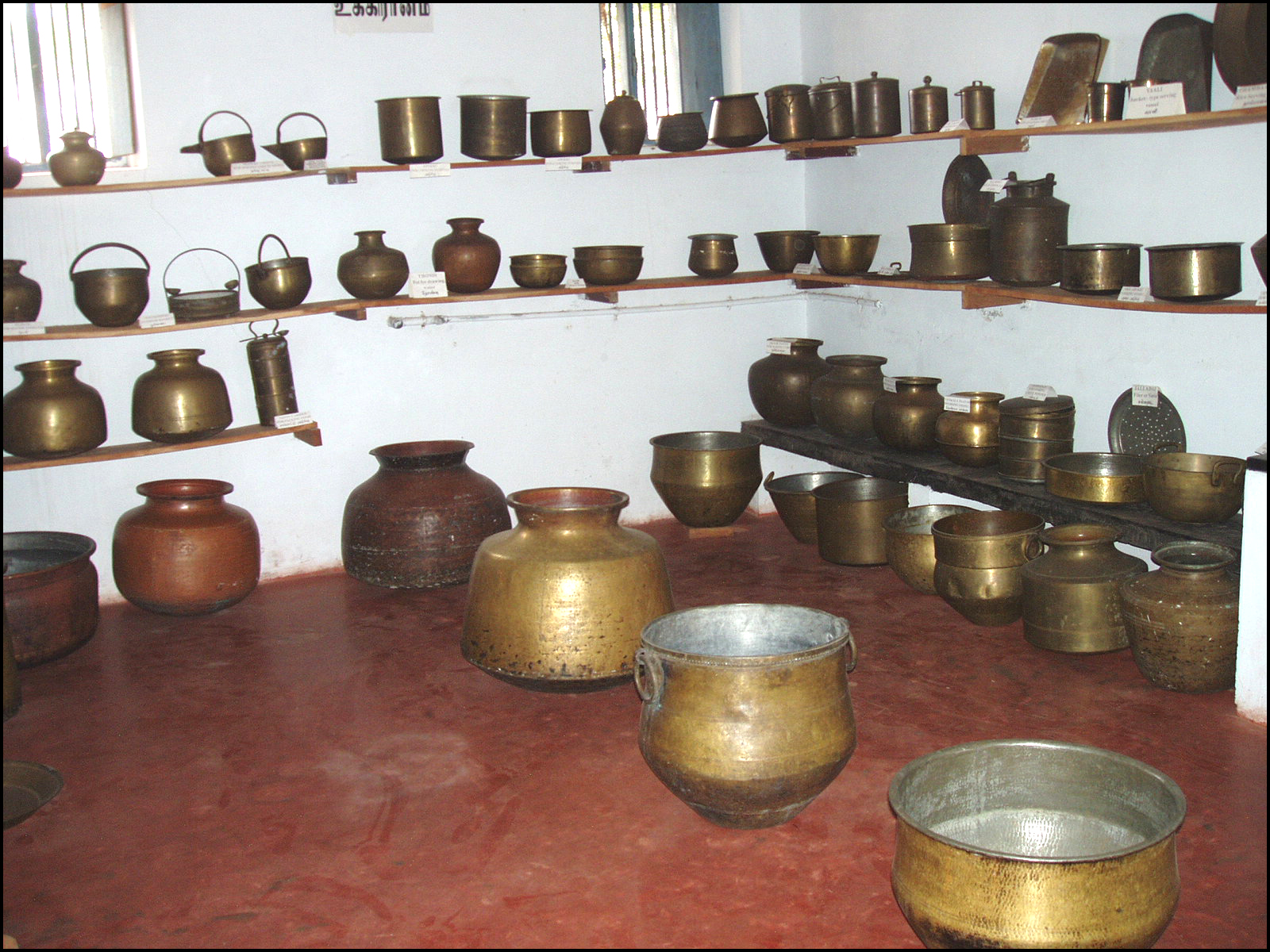
Originally the kitchen, this room now displays cooking vessels of brass, copper and bronze. The vessels were large, to feed a big joint family, and the cooks and helpers were always men.
First Floor
Zenana
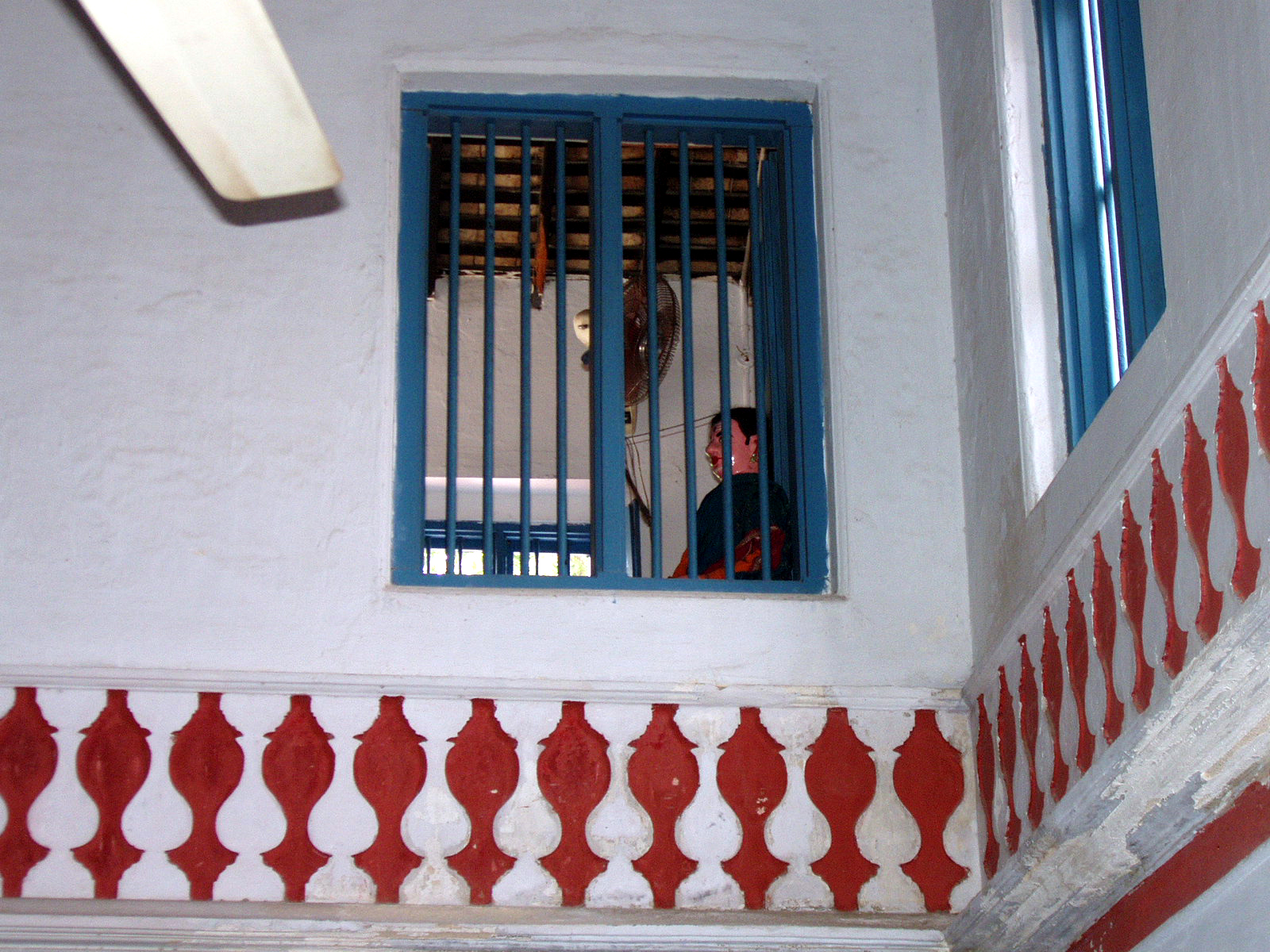
The first floor was the Zenana, to which the women of the house were restricted. An aberration in South India, it was the result pf the influence of the Muslims of Arcot.
Summer Room
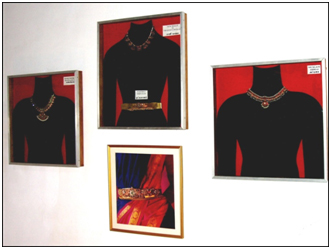
This room was known as the Machi, where grains were stored or ladies spent hot summer afternoons Copies of traditional jewellery worn by men and women in their daily lives and at weddings are on display here. The indoor games played by the women to while away their time during the hot summers are also on display.
Vastralayam - Textiles
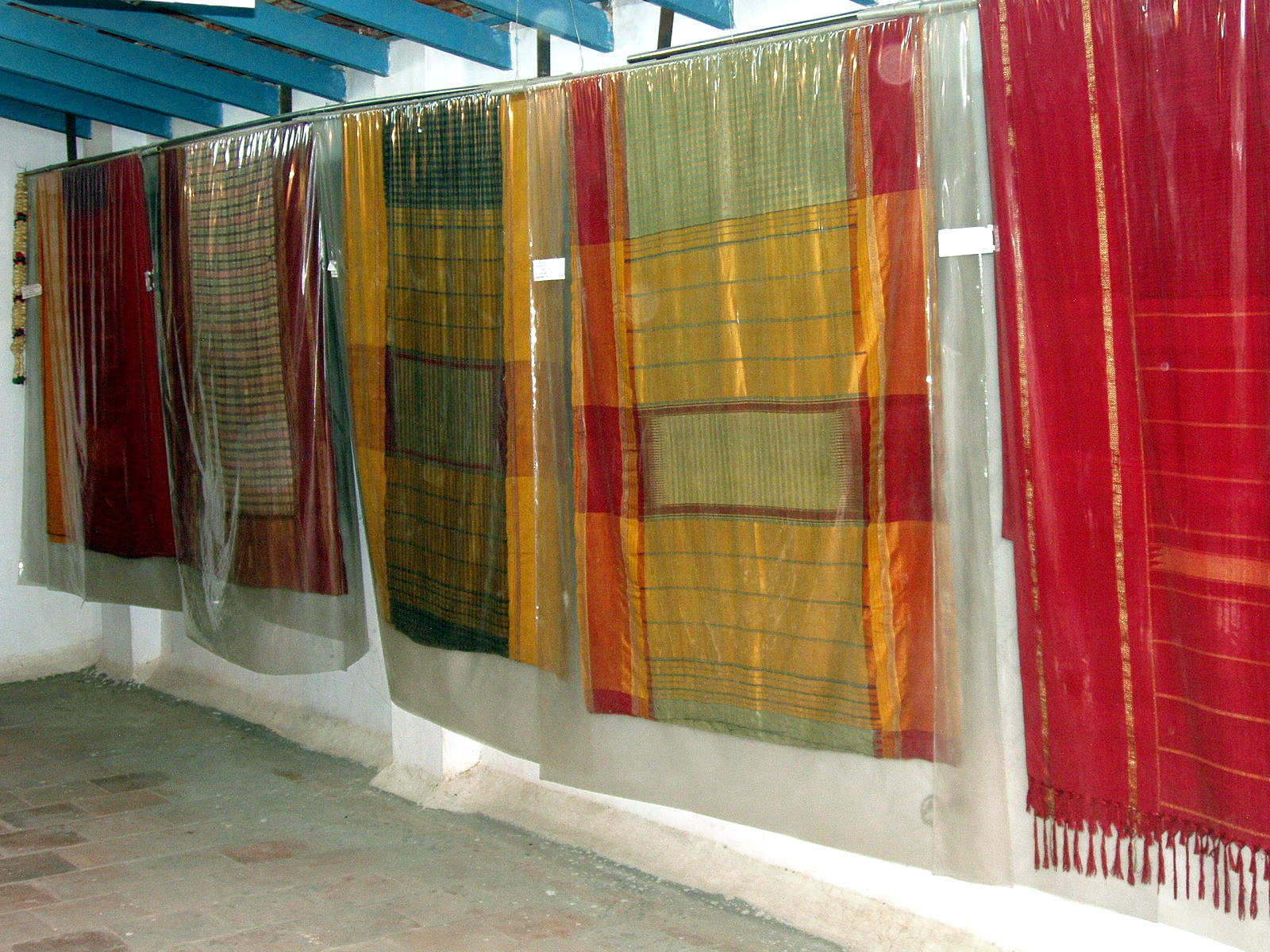
Kanchi was an ancient centre of cotton and silk weaving, a continuing tradition. The women designed the exquisite saris and their borders, which are displayed here.
Second Floor
The Rooftop Room was used to capture the summer breeze, as well as provide a silent space for meditation. The image of Kamakshi, the goddess of Kanchipuram district, faces the gopuram (gateway) tower of the Temple of Ekambaranathar, the Lord of the Single Mango Tree.
The Veda chanting during the Panguni Uttiram (March-April) festival has been held in this building for a few hundred years. Therefore, the Museum remains closed for 15 days during the Panguni Uttiram festival.